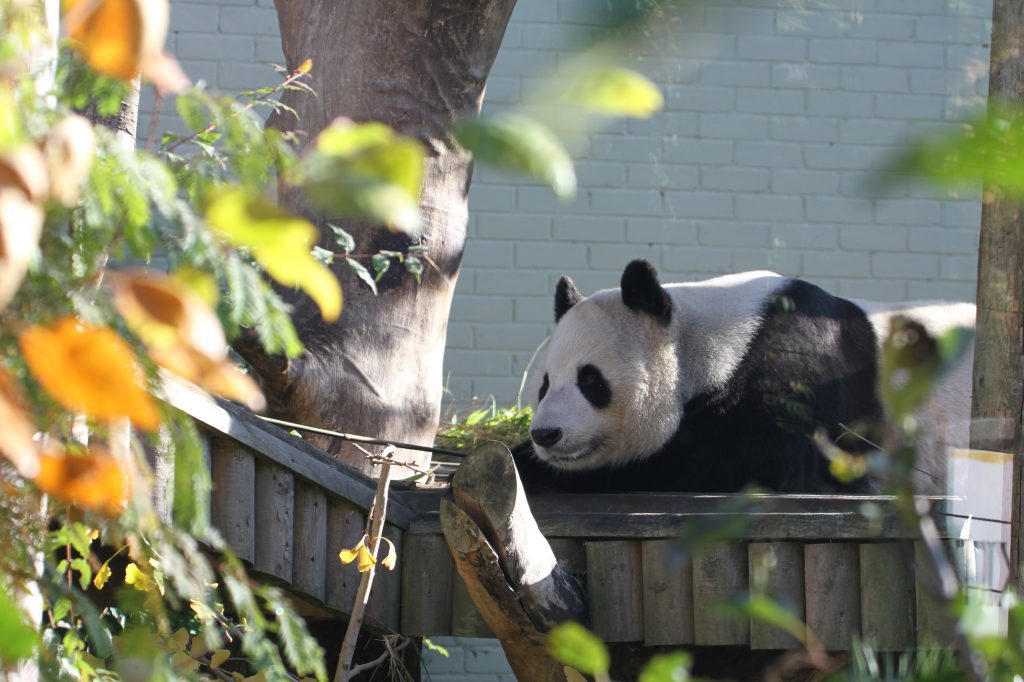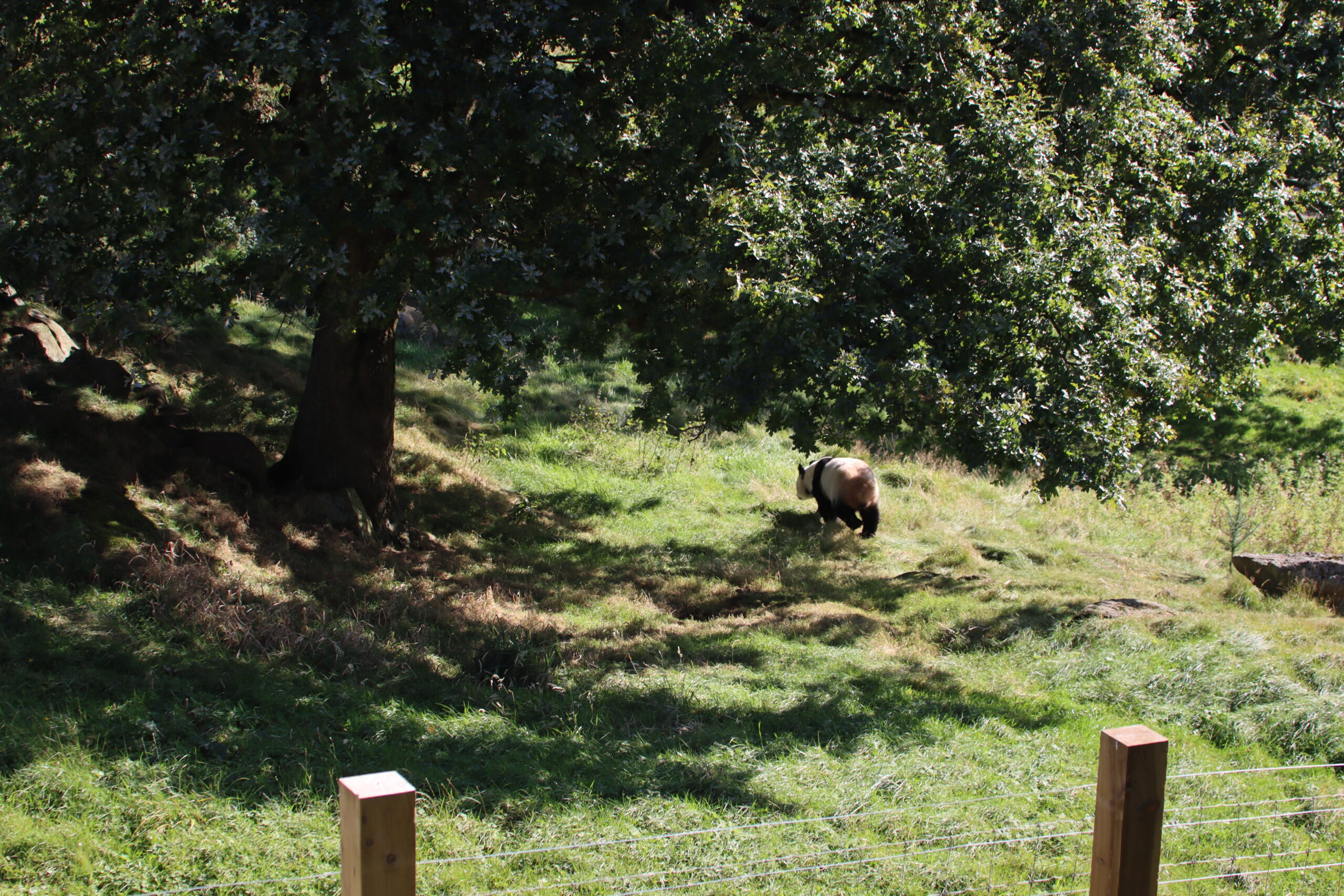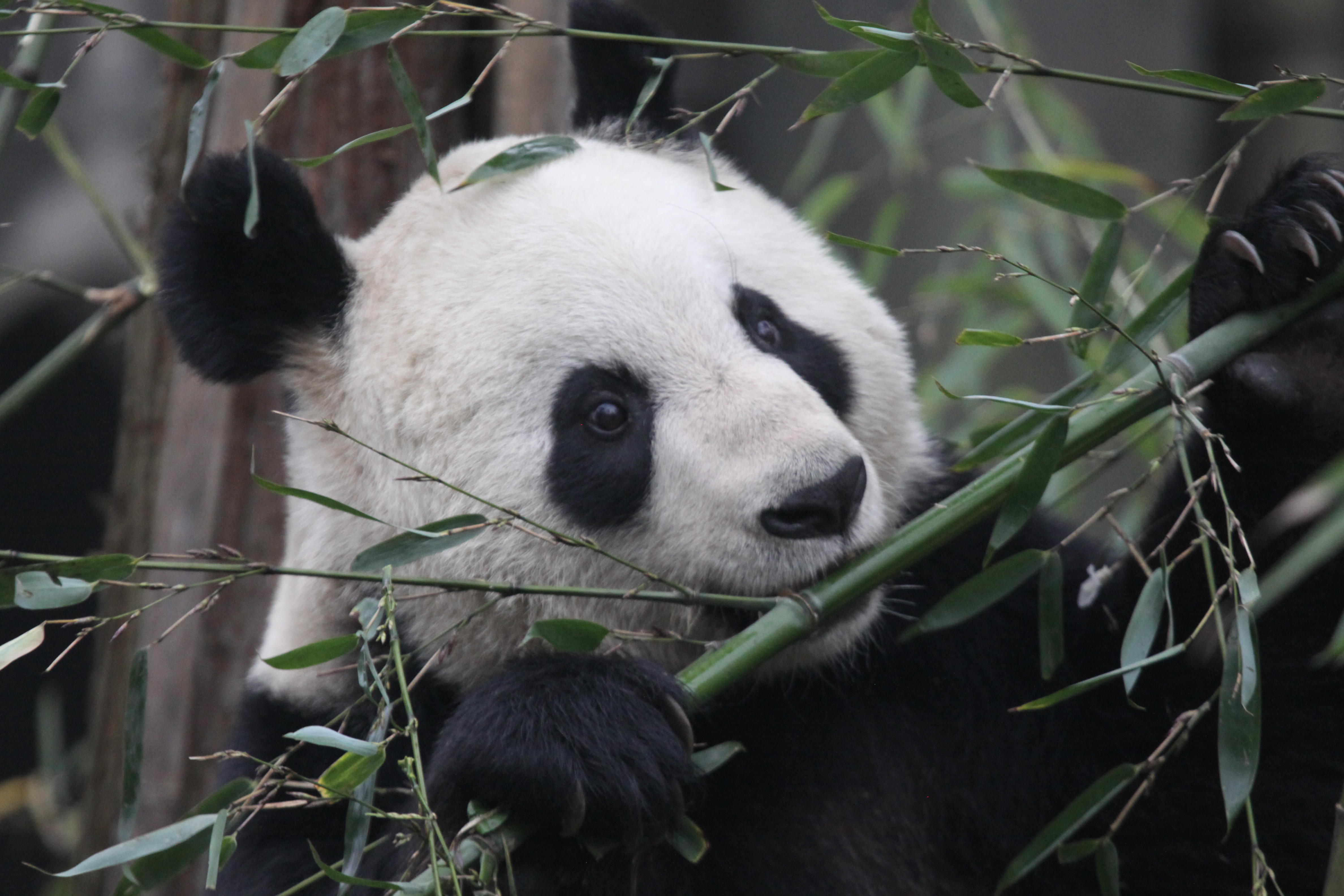RZSS Panda Developments

RZSS Edinburgh Zoo Panda Update by Iain valentine, Director of Pandas:
Today, on this bank holiday Monday, RZSS Edinburgh Zoo is packed full of visitors learning about the natural world. However, it’s extremely quiet in the giant panda enclosure – which is currently closed to visitors until Thursday 5 May – as our two black white bears doze peacefully. Despite this apparent calm, there’s lots of exciting developments within the RZSS Giant Panda Project that I want to tell you about.
Yesterday afternoon, Tian Tian’s behaviour and the scientific results from the University of Edinburgh’s hormone testing of her urine showed she’d reached her short breeding window, after what had been a very slow climb to peak accelerated with some speed. Although this is all completely normal female panda behaviour, this year Tian Tian surprised us in a few ways, coming into season much later than she ever has before since her arrival in Scotland (last year she reached her breeding window on 26 March, then in previous years her dates fell within April) and ovulating on day ten instead of her usual day 13.
We gathered all of RZSS’s experts including myself, the panda keepers and our veterinary staff and commenced our plan of action. Unfortunately Yang Guang wasn’t receptive to natural mating this year – turning the tables on Tian Tian for a change whose behaviour suggested she wanted to be mated. Although we’ve tried a number of times now to see if the pandas will mate naturally, it’s important to approach every year afresh as animals are by their very nature unpredictable and their behaviours can change from year to year.
In the early evening, we then prepared to give nature a helping hand by performing an artificial insemination procedure. With our Chinese colleagues from the China Conservation and Research Centre for the Giant Panda (CCRCGP), Tian Tian was implanted with semen from our male Yang Guang by experts from the Leibniz Institute for Zoo and Wildlife Research (IZW), a complex procedure which was undertaken with great skill. Also present to assist with AI work was Bill Ritchie from Roslin Embryology and the fantastic team at RZSS. We continue to believe that it’s important biologically for Tian Tian, a female in her prime, to breed and reproduce and add to a vital ex-situ population outside of China. If we can successfully assist Tian Tian to carry to full term, we have no doubt that she’ll be an excellent mother and both our male and female’s genetics will be preserved in future giant panda generations.
It’ll be some time before we know if Tian Tian has initially conceived and then if she goes onto fall pregnant. As you’re most likely heard before, pandas practice delayed implantation where the fertilised egg will not implant into the uterus until sometime after conception, as the embryo is still in diapause or rest. There are many hurdles to go through yet and until birth takes place, all giant panda conceptions are complex and uncertain. We will keep you updated via this blog as things progress over the coming months.
In other exciting news, our Beyond the Panda education outreach programme relaunches for 2016 tomorrow. A new secondary school session has been developed by RZSS, primarily for Scottish children learning Mandarin. The new sessions move science into the language classroom as students learn how to translate real life giant panda information signage, press releases and other written material. Beyond the Panda is a set of learning resources, delivered by RZSS and funded by the Confucius Institute Scotland, which provide a range of interdisciplinary learning activities for children and young people from early years onwards. The resources enable learners to investigate and study a variety of topics within the overall context of giant pandas and China.
Here at RZSS, we have over 40 ongoing science and research projects either taking place or in the pipeline, each the result of RZZS harnessing the collaborative expertise of international research organisations based in the UK. Our projects are engaging in such diverse (and vital) activities as monitoring mountain ecosystems and their panda habitat, evaluating threats and trends regarding the possible impact of climate change on pandas and their habitat, and developing a co-management model for native forest restoration. Other key projects seek to discover a bio-marker for female giant panda implantation, which we believe we have now achieved, and to create a non-resistant drug treatment for a type of parasitic worm that pandas are prone to. The wide scope of projects also involve using DNA to understand the complexity of bamboo, learning more about how giant pandas communicate chemically, understanding further the gastrointestinal diseases pandas are prone to, and involvement with collaborative approaches to managing human-wildlife interactions in the Wolong Nature Reserve, China.
As I mentioned in a recent blog, as a global collective we are now at an exciting point in the Giant Panda Programme. A huge amount of scientific knowledge has been accumulated globally over the years (although there is still much to learn), the number of giant pandas in captivity has increased (and the variety of genetics), the perfecting of pre-release training for young pandas in China is happening and corridor reserves have and are being established.
Fantastic reason to celebrate on this changeable May bank holiday.
Source: RZSS Edinburgh Zoo









